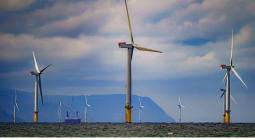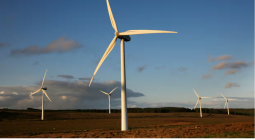The Guardian view on wind energy and the UK: Labour plays catch-up

In its pomp during the 1970s, Ardersier port near Inverness was a behemoth of Scottish industry. During the North Sea oil and gas boom, thousands worked on one of the largest rig construction sites in the world. Disused since 2001, the port is making a triumphant comeback, to be reconfigured as a giant hub for the turbines that will harness wind power off the Scottish coast. If Sir Keir Starmer’s government is to achieve its goal of fully decarbonising electricity by 2030, this huge investment project in the Highlands will need to be matched by similar ambition elsewhere.
Wind energy is fundamental to meeting Britain’s net zero commitments, generating growth and reducing energy costs. But under Rishi Sunak, the sector suffered a lost year in 2023, when the government failed to award a single offshore wind contract. In July, the Climate Change Committee estimated that by 2030, the number of annual offshore and onshore wind installations needed to at least triple and double, respectively.
A month into this parliament, Labour has already demonstrated that it means business. On her first day in office, the chancellor, Rachel Reeves, announced that the National Planning Policy Framework would be amended to eliminate clauses that amounted to a de facto ban on new onshore windfarms. Meanwhile, the new publicly owned company, Great British Energy, has announced a partnership with the crown estate – which owns the majority of the seabed surrounding Britain’s coastline – that will help accelerate the deployment of fixed and floating turbines.
Crucially, the secretary of state for energy security and net zero, Ed Miliband, has boosted to record levels the budget for this year’s summer auction of renewable energy contracts, which in 2023 attracted no offshore wind bidders after the government set the price too low. Taken together, these early moves amount to a step change on wind energy that gives substance to Sir Keir’s stated determination to transform Britain into a “clean energy superpower”.
Nevertheless, enormous challenges remain if wind is to play its part in achieving Labour’s target date for clean power. Tripling offshore wind generation within the next six years is likely to entail still more generous financial guarantees to attract developers, who are being heavily courted by the United States and European Union member states. Mr Miliband’s hiked budget was a good start, but much more fiscal firepower will be required.
The politics of pylons will also be treacherous. Fully accessing wind power will rely on the government’s ability to support a massive expansion and upgrading of the country’s power networks. By 2030, five times more electricity infrastructure will need to be installed than in the last three decades. As Labour invokes centralised planning powers to fast-track construction and override local objections, it will need to find creative ways to incentivise and win consent from communities.
That will require offering an inspiring vision as well as tough talk about hard choices. In a new report, the Royal Academy of Engineering invokes the sense of mission that informed the work of the vaccines taskforce. Fully exploiting the British Isles’ most obvious natural asset is environmentally and economically the right thing to do, and Mr Miliband has made a very good start. But compared with the challenges ahead, so far it’s been a breeze.





